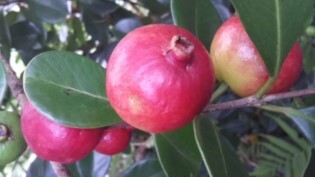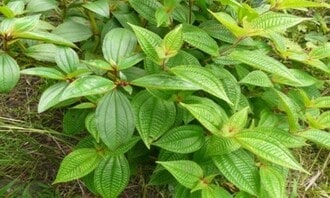"My thesis in a few lines": interview with Anziz Ahmed Abdou, Comorian student
Last update: 27 March 2023
The southwest Indian Ocean is recognized for its rich biodiversity. With 12 000 endemic species, it represents a hot-spot of the world biodiversity. Among the risks that threaten it, invasive exotic species... Their invasions are driven by the anthropization of natural or semi-natural environments, linked to human activities...
For a decade, the mobilization on this subject in the area is significant, the challenges are huge.
In Reunion, POLI for Operational Plan for the Fight against Invasive Species, is deployed in Reunion since 2010 in order to implement measures and concrete actions to protect the natural environments of the island against invasive species. It concerns all the institutional, associative and professional actors concerned by this subject.
In 2012, in order to build a regional coordination and beyond, the network WIONIS (Western Indian Ocean Network on Invasive Species) is created. Between 2012 and 2018, it is based in a very operational way on the project Inva’Ziles ("Establishing and testing a comprehensive model to prevent and manage the spread of invasive species in island ecosystems") implemented by the International Union for Conservation of Nature (IUCN), funded by the European Union and hosted by the Indian Ocean Commission (IOC). The aim was to improve management systems for invasive species on islands, particularly those in the Western Indian Ocean (WIO), in order to reduce impacts on communities and nature.
In 2017, a listing of 410 Exotic Species from the entire southwest Indian Ocean region has been published. This shared database provides a detailed knowledge of their distribution (presence/absence) and specifies their status (invasive/non-invasive) on each territory of the area. Since then, efforts to improve this knowledge on each of the territories of the zone are continuing, especially in the Comoros archipelago where this knowledge was still only partial...
Anziz's background…
After obtaining a bachelor's degree in life sciences from the University of the Comoros and a master's degree in biodiversity of tropical ecosystems, urban engineering and environment at the University of Reunion, Anziz Ahmed Abdou is starting a PhD in December 2017 at the University of Reunion, supervised by Mathieu Rouget (UMR PVBMT - CIRAD) and Dominique Strasberg (UMR PVBMT - University of Reunion).
Anziz specifies that: "preparing a PhD is part of the continuity of a path I have always dreamed of since my childhood. Indeed, I grew up in a country with high ecological potential, unknown to the international community, singular by its insularity and its geostrategic position, between Madagascar and the African continent. A thesis is the best way to bring new knowledge to my country and to build synergies with the other islands of the southwestern Indian Ocean, on this subject of regional importance. "
Regional and local environmental issues...
The Mascarene Archipelago (Mauritius, Reunion Island), the Seychelles, Madagascar and the Comoros Archipelago, world biodiversity hotspots, are regularly the targets of research programs in conservation biology. The lack of knowledge on the Comoros sometimes makes it difficult to implement joint actions in this country in connection with the neighboring islands. Anziz's work aims to fill this knowledge gap.
In the Comoros, deforestation has taken on a significant scale. Agriculture and urbanization are the main causes, causing the loss of a large part of the primary natural environments on the whole archipelago. A series of invasive exotic species has thus established in these disturbed natural environments, constituting a threat to the maintenance of the last remnants of primary forests of low and medium altitudes. This thesis aims to propose decision support tools (surveys, species lists, analyses) to guide conservation actions for the native flora and habitats of the archipelago.
Listing exotic species on a territory, characterizing their status (invasive or not) according to the environment where they are present, analyzing the factors which explain their presence are as many elements on which Anziz is working...
Key research questions...
The work of Anziz will provide :
- Review the knowledge acquired on invasive plants in the Indian Ocean: What are they? How are these different species distributed in the different countries of the southwestern Indian Ocean region? What similarities can be found between these islands in terms of invasive species composition?
- Inventory invasive plants in different ecosystems of the island of La Grande Comore, in terms of occurrences and occupied surface, in terms of frequency (occurrences/total occupied surface), in terms of variation observed within an ecosystem. The thesis focuses on biophysical factors (altitude, land use, etc.) that could influence the level of invasions in relation to the ecosystems present.
Finally,
- Investigate the preponderance of invasive alien species in the pioneer vegetation on lava flows in Reunion and Grande Comores, respectively from Piton de la Fournaise and Karthala, and the factors that can explain on a same age flow the differences in frequency and nature of species present are studied.
First results ...
The first results of Anziz show that among the 410 invasive species of the South-West Indian Ocean islands, 112 exotic species are present in the natural and semi-natural environments of the islands of the Comoros archipelago and that 111 are invasive; 117 are absent.
On the scale of Grande Comore, 55 exotic species colonize both anthropized habitats and native forests, but three species are the most invasive on the island. They can be observed on the different windward or leeward slopes and at low and medium altitudes, but in different proportions, more present at low altitudes and declining sharply from 700 meters of altitude. These three species are Psidium cattleianum (nearly 90% of occurrences), Clidemia hirta (nearly 70% of occurrences) and Rubus rosifolius (nearly 40% of occurrences).
On a regional scale, Madagascar, the Comoros Archipelago and Reunion Island show great similarities in their composition of invasive exotic species. Except for Mayotte and the Seychelles present very similar profiles; idem for Mauritius and Rodrigues.
The comparison with other oceanic islands (Hawaii and other Pacific islands) shows that the islands of the southwestern Indian Ocean (except Madagascar and Mauritius), are subject to stronger invasions.
The first elements of comparison between lava flows in Reunion and Comoros show that the pioneer vegetation has identical characteristics, composed of woody species, native trees and shrubs, most of which already produce flowers and fruits, showing an advanced maturity. The establishment of invasive exotic species is not yet visible but could eventually modify these successions... Although these young flows are at this stage mostly dominated by native species, exotic species have already shown their ability to form highly invasive populations in these volcanic substrates on older lava flows in Indonesia, Hawaii and Reunion Island.
Last update: 27 March 2023



